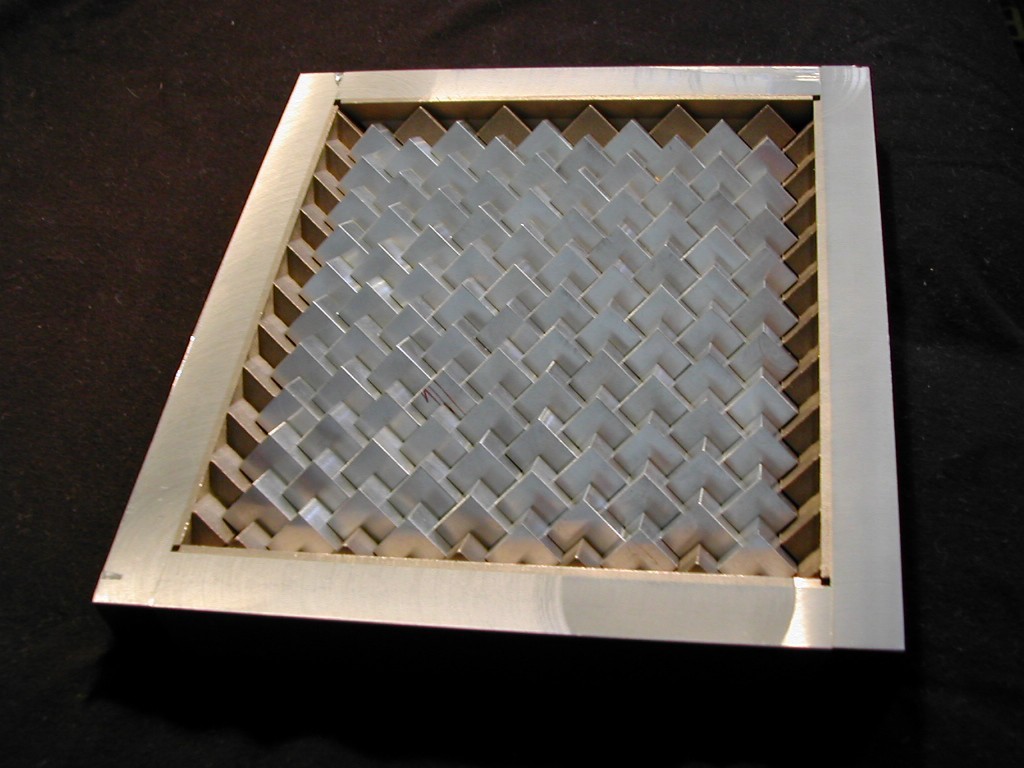Self-lining structures
There is a fairly well-known olympiad problem: If there are several convex flat figures on the table, then at least one of them can be moved without touching the others (the statement looks very natural, although the proof is not very simple).
It turns out that in a three-dimensional space this statement is already wrong: you can arrange several convex bodies so that none of them can be moved without touching others.

Here is an example for cubes. Each of them is held by six neighbors who do not allow it to move in any direction. Outside, they are supported by a frame, but you can get rid of it by slightly bending the plane from the cubes, turning it into a closed surface. Link to Mathemtica notebook with design. Similar structures can be constructed for other polyhedra.
')
Interestingly, the problem of constructing such a structure was proposed at the Moscow Mathematical Olympiad (problem 11.6 here ) and the schoolchildren proposed two constructions that were previously unknown to mathematicians.
Russian mathematicians A.Ya.Kanel-Belov and Yu.Estrin obtained several theoretical results on the subject of such structures and they had the idea of applying such ideas in the design of composite materials. Thus, Y.Estrinom won the mega-grant of the Russian government and opened a laboratory to study the possibilities of using such structures in practice.
Materials of the Summer Conference of the Tournament of Cities on this topic.
An article in Quantum (p. 20).
It turns out that in a three-dimensional space this statement is already wrong: you can arrange several convex bodies so that none of them can be moved without touching others.

Here is an example for cubes. Each of them is held by six neighbors who do not allow it to move in any direction. Outside, they are supported by a frame, but you can get rid of it by slightly bending the plane from the cubes, turning it into a closed surface. Link to Mathemtica notebook with design. Similar structures can be constructed for other polyhedra.
')
Interestingly, the problem of constructing such a structure was proposed at the Moscow Mathematical Olympiad (problem 11.6 here ) and the schoolchildren proposed two constructions that were previously unknown to mathematicians.
Russian mathematicians A.Ya.Kanel-Belov and Yu.Estrin obtained several theoretical results on the subject of such structures and they had the idea of applying such ideas in the design of composite materials. Thus, Y.Estrinom won the mega-grant of the Russian government and opened a laboratory to study the possibilities of using such structures in practice.
Links
Materials of the Summer Conference of the Tournament of Cities on this topic.
An article in Quantum (p. 20).
Source: https://habr.com/ru/post/233407/
All Articles